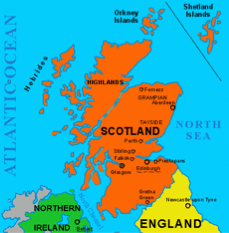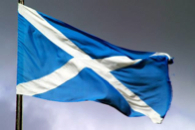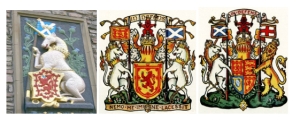September 11th, 2014

On September 16, 2014, Scotland will hold a referendum that will decide its independence from the United Kingdom. Scotland is a sovereign state in the United Kingdom of Great Britain and Northern Ireland and is part of the UK’s constitutional monarchy. If the referendum in favor of independence gathers the votes it needs, Scotland will secede from the UK.
As we wait in anticipation of the outcome of the referendum, we felt it would be helpful to learn more about this country and share with you a few interesting facts.
History
1. Scotland was an independent country and never took kindly to invaders but nevertheless it unified with England in 1707 when King James VI of Scotland became King James I of both England and Scotland after the death eased Queen Elizabeth I. Their merger formed the United Kingdom of Great Britain giving rise to factions which to this day opposed the unification. For more history check this link: http://www.educationscotland.gov.uk/scotlandshistory/
Geography & People

2. The Flag of Scotland is a white X-shaped cross, which represents the cross of the patron saint of Scotland, Saint Andrew on a blue field. The flag is called the Saltire or the Saint Andrew’s Cross.
3. Scotland includes over 790 islands. These include groups called Orkney, Shetland and the Hebrides.
4. The population of Scotland in 2011 was around 5.3 million.
5. The capital of Scotland is Edinburgh while the largest city is Glasgow. Other major cities include Aberdeen and Dundee.

Image: Edinburgh
6. Scotland has three officially recognized languages: English, Scots (a relative of English) and Scottish Gaelic (a completely different language).
Education
7. As part of the UK, Scotland’s education system is separate and governed from within Scotland.
8. Scotland emphasizes on a broad education system and was the first country since Sparta in classical Greece to implement a system of general public education.
9. There are 14 Scottish universities some of which are the oldest universities in the world.
10. The University of St Andrews, founded in 1413, is the third oldest university in the UK after Oxford and Cambridge. It welcomed Britain’s first female student in 1862. It is also where the world’s first students’ union came into existence in 1882.

11. The world’s first infant school was opened by philosopher and pedagogue Robert Owen in New Lanark in 1816.
Economy & Resources
12. Aberdeen has become an important center for the oil industry after the finding of oil in the North Sea.
13. Edinburgh is Europe’s fifth largest financial center.
14. Scotland offers free water for its citizens, although oil and nuclear energy are governed by the UK.
15. Although their health system is part of the greater National Health Service, Scotland controls its implementation (which allows them to provide free prescriptions to everyone, something England does not do).
Government & Judicial System
16. Scotland also has its own judicial system and unlike most western systems, courts can reach the decision of guilty, not guilty, or not proved.
17. The police force of Scotland is separate from that of the rest of the UK.
18. Scotland also has its own distinct parliament, which is chaired by the First Minister of Scotland.
Inventions
19. Notable Scottish inventions include: the method of logarithms (1614), tarmac (1820), first-ever house to be lit by gas (1784), the waterproof raincoat (1823), the hot blast furnace (1828), the modern, rear-wheel driven bicycle (1839), the pneumatic tire (1845) and reinvented in a more practical way (1887) known today as Dunlop Rubber (now under the joint ownership of Goodyear and Sumitomo Rubber Industries), and the discovery of the anesthetic properties of chloroform in 1847 which was successfully introduced for general medical use. (There are many more inventions by Scottish inventors, a list too long for this blog. For more information check this link: http://listverse.com/2014/01/05/10-things-you-should-know-about-scotland/)
Fun / Odd Facts
20. Genetic studies are now pointing that the mutation for red hair, which now reaches a world maximum in Western Scotland and Northern Ireland, may have originated in Central Asia too. This means that Scottish people may be (partly) descended from ancient people from Central Asia. Surprised? So were we, so here’s one source: www.eupedia.com

21. Archaeological evidence suggests that the first toilets ever were possibly built in Orkney, Scotland in 3,000 BC.
22. Scotland is reputed for its whisky, known outside Scotland as Scotch Whisky. Yet, what few people know is that whisky was in fact invented in China, and was first distilled by monks in Ireland in the early 15th century before reaching Scotland 100 years later.
23. The most infamous Scottish dish is haggis, normally made with sheep’s ‘pluck’ (heart, liver, and lungs), minced with onion, oatmeal, suet, spices, and salt, mixed with stock, and traditionally boiled in the animal’s stomach for approximately an hour.

24. Kilts, tartans and bagpipes aren’t Scottish inventions. Kilts originated in Ireland. Tartans ere found in Bronze-age or Iron-age Central Europe (Hallstatt culture) and Central Asia (Tocharian culture). Bagpipes might also be an ancient invention from Central Asia. These could be debated so here’s the link to the source http://www.tamos.net/~rhay/shenkman.html.

25. A few more Scottish dishes known for their odd names include: Forfar Bridie (a meat pastry), Cock-a-leekie (soup), Collops (escalope), Crappit heid (fish dish), Finnan haddie (haddock fish), Arbroath Smokie (smoked haddock), Cullen Skink (haddock soup), Partan bree (seafood dish), Mince and tatties (minced meat and potatoes), Rumbledethumps, Skirlie and so on. And, of course, there is the ubiquitous shortbread, Scotland’s most famous cookie.
Bonus fact!
26. Scotland, the official animal of Scotland is the Unicorn, appreciated for its purity and strength. http://www.scotsman.com/lifestyle/heritage/scottish-fact-of-the-week-scotland-s-official-animal-the-unicorn-1-2564399 .

It was King James I who drew up a new royal coat of arms that included both the traditional English lion as well as the Scottish Unicorn. According to folklore (going back to the ancient Babylonians in 3,500 B.C.), the lion and the unicorn hate each other. The Unicorn is seen as representing spring and the lion representing summer. Each year the two fight for supremacy, and each year the lion eventually wins. A popular English nursery rhyme sums up the animosity and the old wars between England and Scotland:
The lion and the unicorn
Were fighting for the crown;
The lion beat the unicorn
All round about the town.
The lion’s supremacy may come to an end, if Scotland’s upcoming referendum tilts in favor of independence and secession. The unicorn will prove to be the victor after all.
Slainte! (That’s Good Health in Scots)

http://https://acei-global.org/


